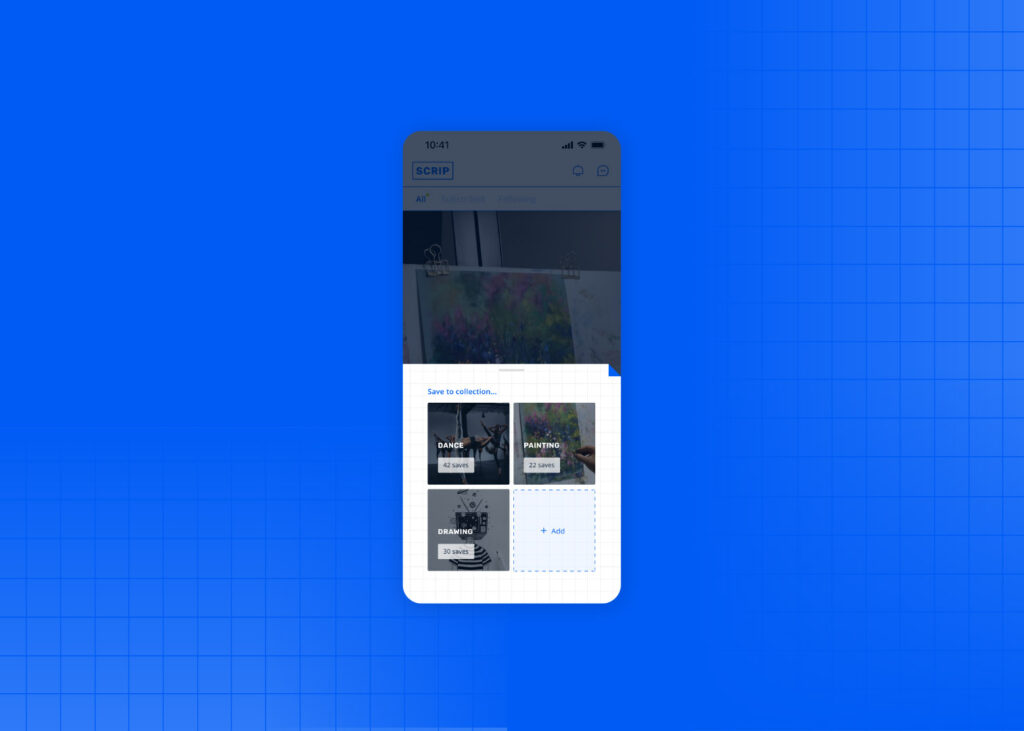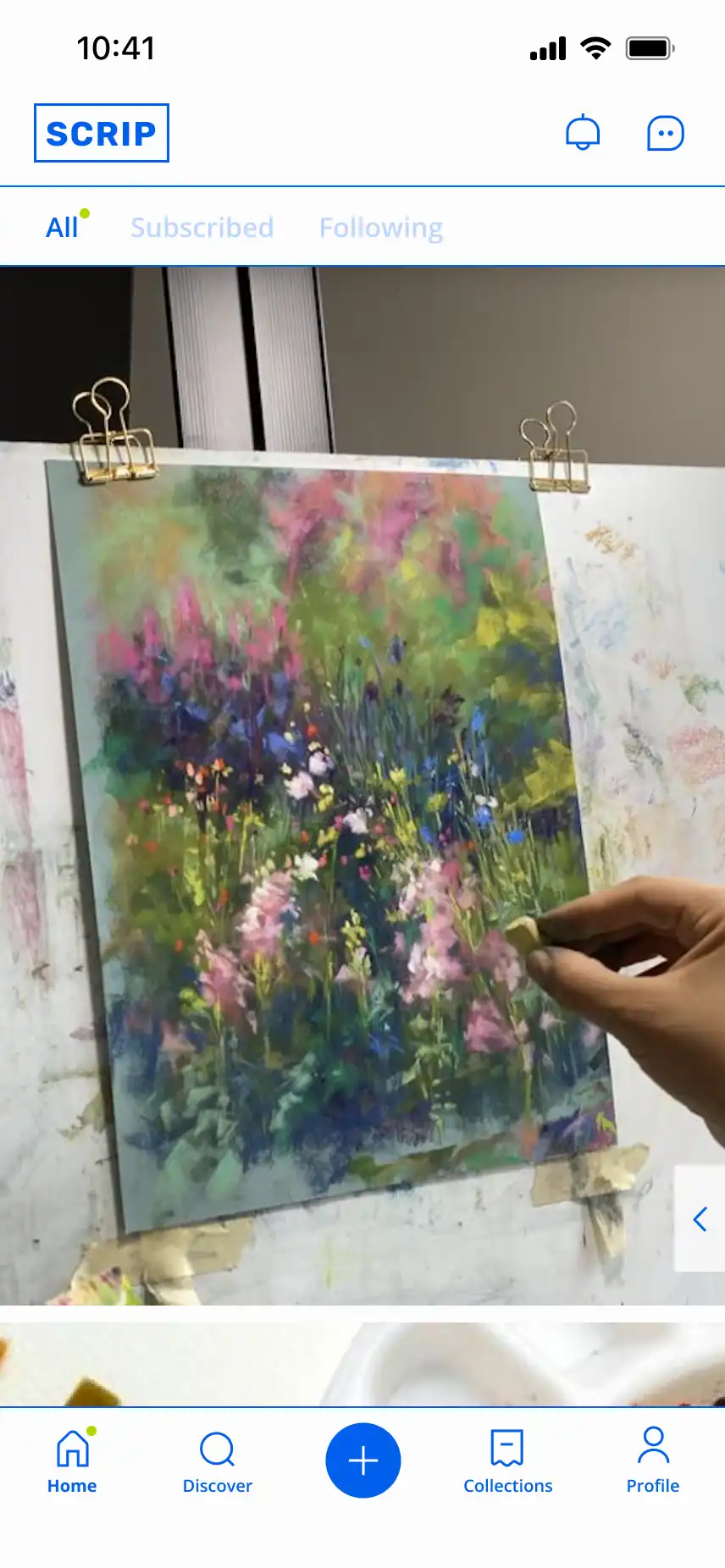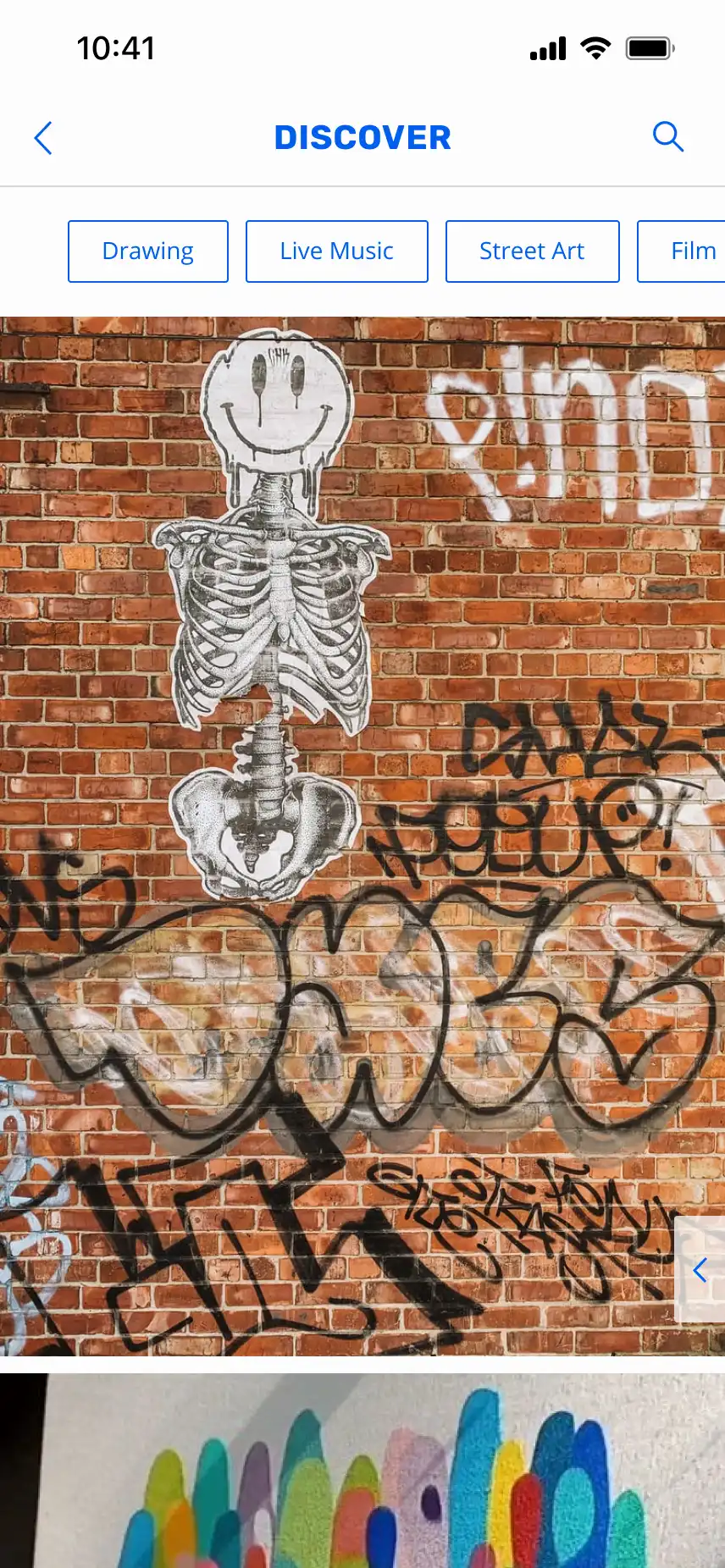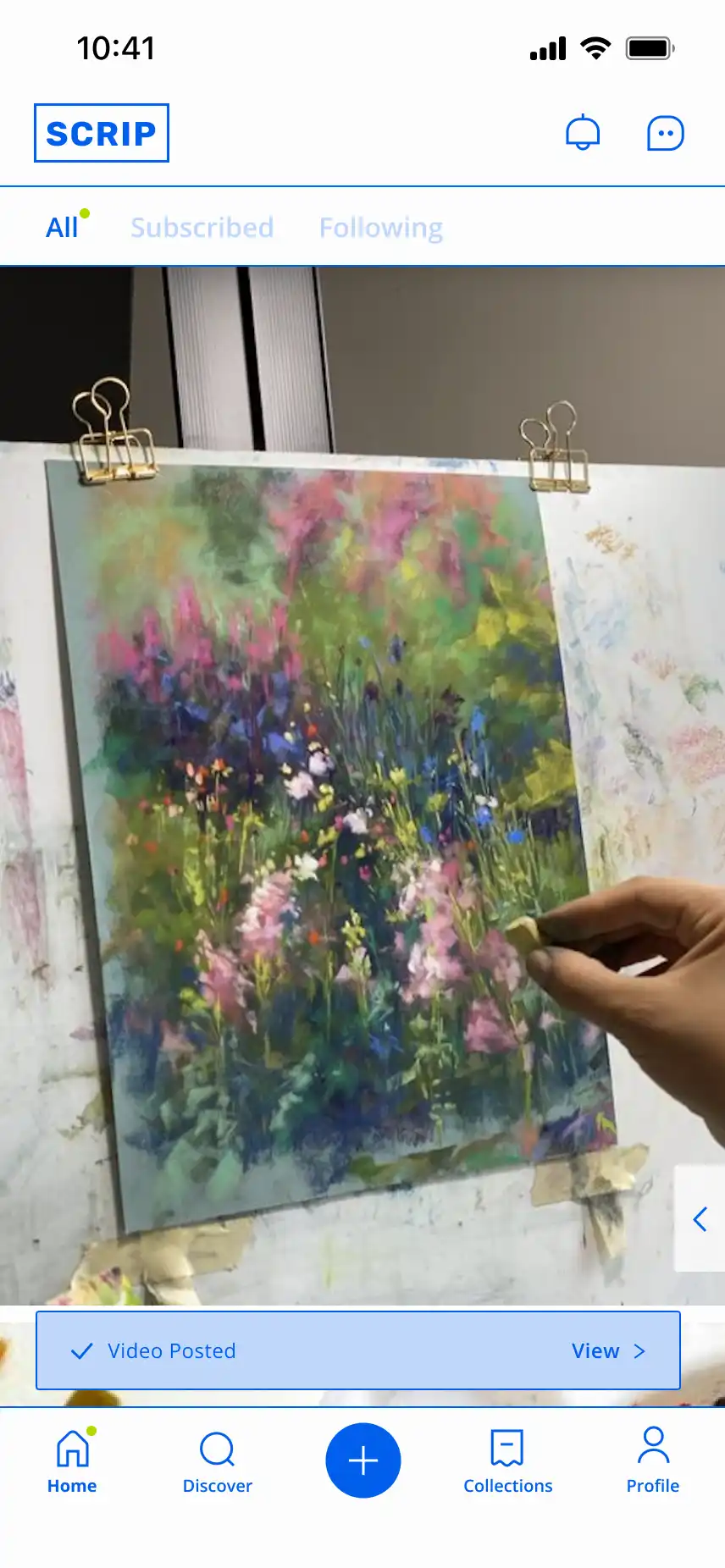Scrip: Data Conscious Social Media Application
_Application Design

Proposed Solution
A content sharing platform that connects people to content and creators through user defined interests NOT real world relationships and personal data.
Expected Outcome
An inspiring and fun content first experience that respects user’s data privacy and puts them in control of their content.
Target User
The creative who is concerned about their data privacy, but wants to be connected to a larger community to be inspired and entertained.

Problem Statment
Internet platforms like YouTube use AI that deliver personalized recommendations based on thousands of data points they collect about us. Social platforms like Facebook, Twitter, YouTube, and other platforms have pushed content on their users that their algorithms tell them those users will want to see, based on the data they have about their users. Users have no control or say about the content that they are presented with, how their personal data can influence what they view, and who they are connected to.


Target User + Goals
The target user for Scrip is a person who is concerned about their data privacy, but wants to be connected to a larger community to be inspired and entertained. This larger group can be split into two subgroups of users; “The Fan” and “The Creative“. Both groups have three main goals: to connect, to inspire/be inspired, and to control their own experience.




User Scenarios
User scenarios were used to depict how the users would use the application in a particular context and situation. For these I focused on the user’s goals, what actions were taken, what touch points and channels are involved, and what outcomes occurred. The goal was to create realistic and captivating stories that would demonstrate how the users would interact with the app and what value they receive from it.


Task Flows + Information Architecture
Four main task flows were defined based on the insights made through creating user scenarios and benchmarking apps that were working and some that were not. The tasks flows were pulled from the information architecture and were refined through the wireframe process. The task flows defined are:
- Task Flow 1: Creating an account as a new user
- Task Flow 2: Discovering a new topic and subscribing
- Task Flow 3: Creating and posting video content
- Task Flow 4: Adding content to your collection





Wireframes
Through the wireframe process revisions were made to make the design more cohesive, fill gaps, and make the content more understandable. Several rounds were needed in order to account for the new insights gained from user testing and to refine the system as a whole.



Research + User Testing
User research and testing was preformed for each flow in order to determine likes, dislikes, and understandability of the content as a whole. The talk-a-loud method was used and participants were recorded as they navigated each flow.























